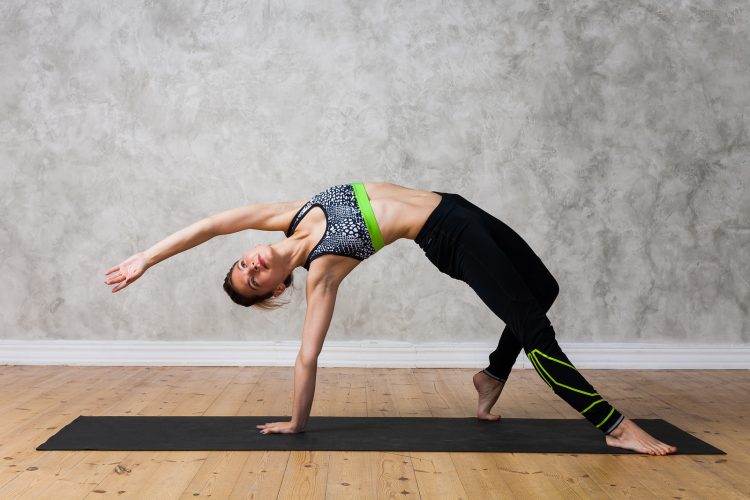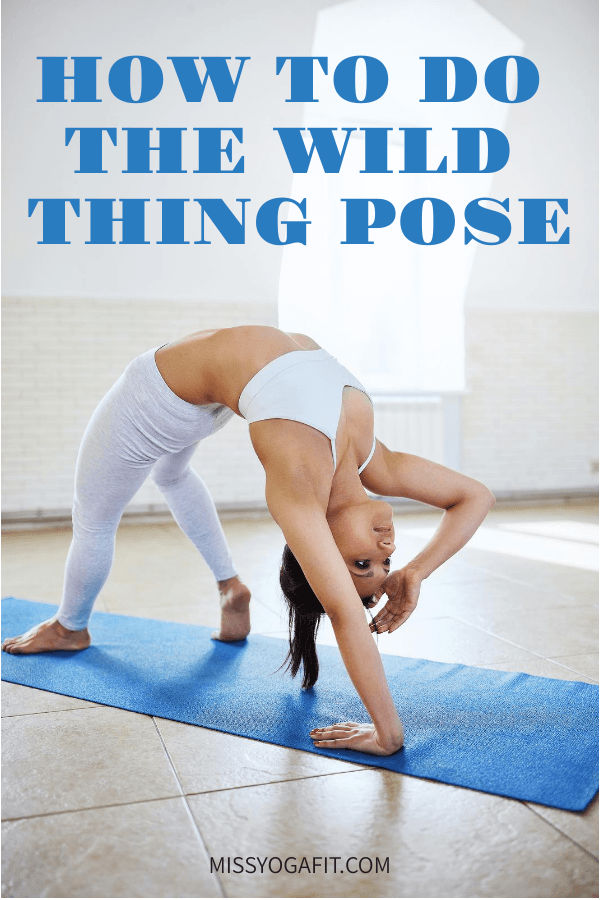
The Wild Thing pose is referred to, poetically, as Camatkarasana; which is translated as ‘the ecstatic unfolding of the enraptured heart.’
POSE INFORMATION
GENERAL INFO
Name in Sanskrit: Camatkarasana
Difficulty: Medium
POSE BENEFITS
- The pose widens the lungs, shoulder areas and chest.
- It exposes the outside of the leg and the flexors of the hip.
- It strengthens the upper back and the shoulders.
POSE CAUTIONS
The following individuals should avoid this pose:
- People with median nerve compression, which happens when hands and arms feel numb.
- People who have any injury related to the muscles (rotator or cuff) around the shoulder joint.
PREPARATORY POSES
- Downward facing dog (Adho Mukha Svanasana)
- Bow pose (Dhanurasana)
- Side plank pose (Vasisthasana)

HOW TO PRACTICE THIS ASANA
ONE
First, do the ‘Adho Mukha Svanasana’ which is also called the ‘Downward-facing Dog’.
Move your weight to the right hand and rotate over the edge of the right foot as if you want to do the Vasisthasana (Side Plank Pose).
TWO
After breathing in, move up your hips with confidence. Hold tight with your right hand gripping with the fingers.
Position backward the top of the right arm. After breathing in, move your foot backwards and set the toes on the floor. Ensure that your knee bends slightly.
THREE
Curve backwards along the upper back to make a sweeping movement of the scapula and into the back of the rib cage.
After breathing out, raise your hips higher until you curve into a backbend. The right foot should be firm over the floor.
FOUR
Continue exhaling and then, curve your head back.
Stretch your left arms from your heart as if you want to show power and being free.
FIVE
Stay in the pose for 5-10 exhales.
Then, go back to the Down Dog and do the same for the other side.
How to do the Wild Thing Pose (Camatkarasana)
Katty Linsky, a certified Restorative Yoga teacher based in the vast landscapes of Russia, has dedicated herself to the art of yoga.
Her journey through yoga, particularly the gentle practice of Restorative Yoga, has been a transformative and enlightening one, rooted in a deep passion for holistic wellness and a commitment to sharing its benefits.

